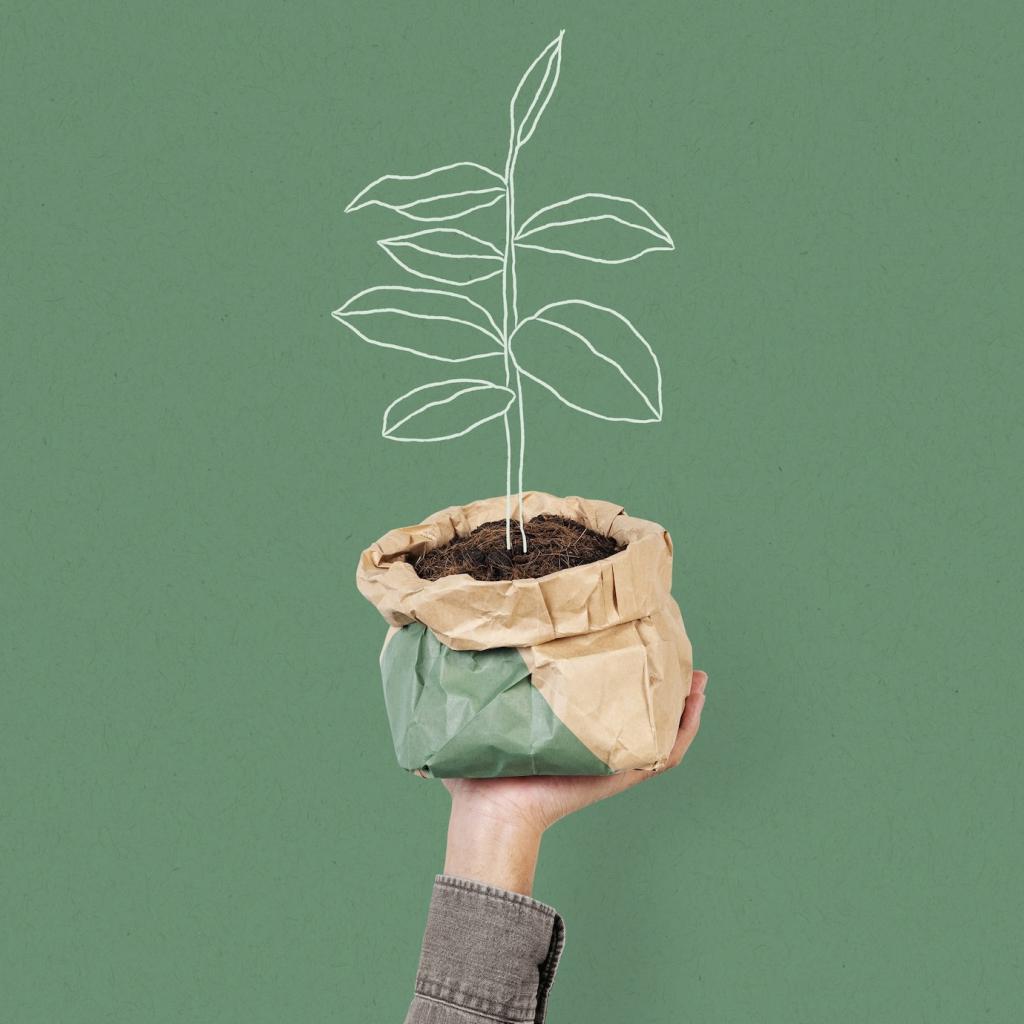Bamboo and Cork: Renewable Resources in Design
Welcome to our living lab for planet-positive materials. Today’s chosen theme: Bamboo and Cork: Renewable Resources in Design. Explore fast-growing grasses, regenerating bark, and designer-approved techniques that bring warmth, resilience, and quiet beauty to everyday spaces. Share your ideas and subscribe to follow each new material story.
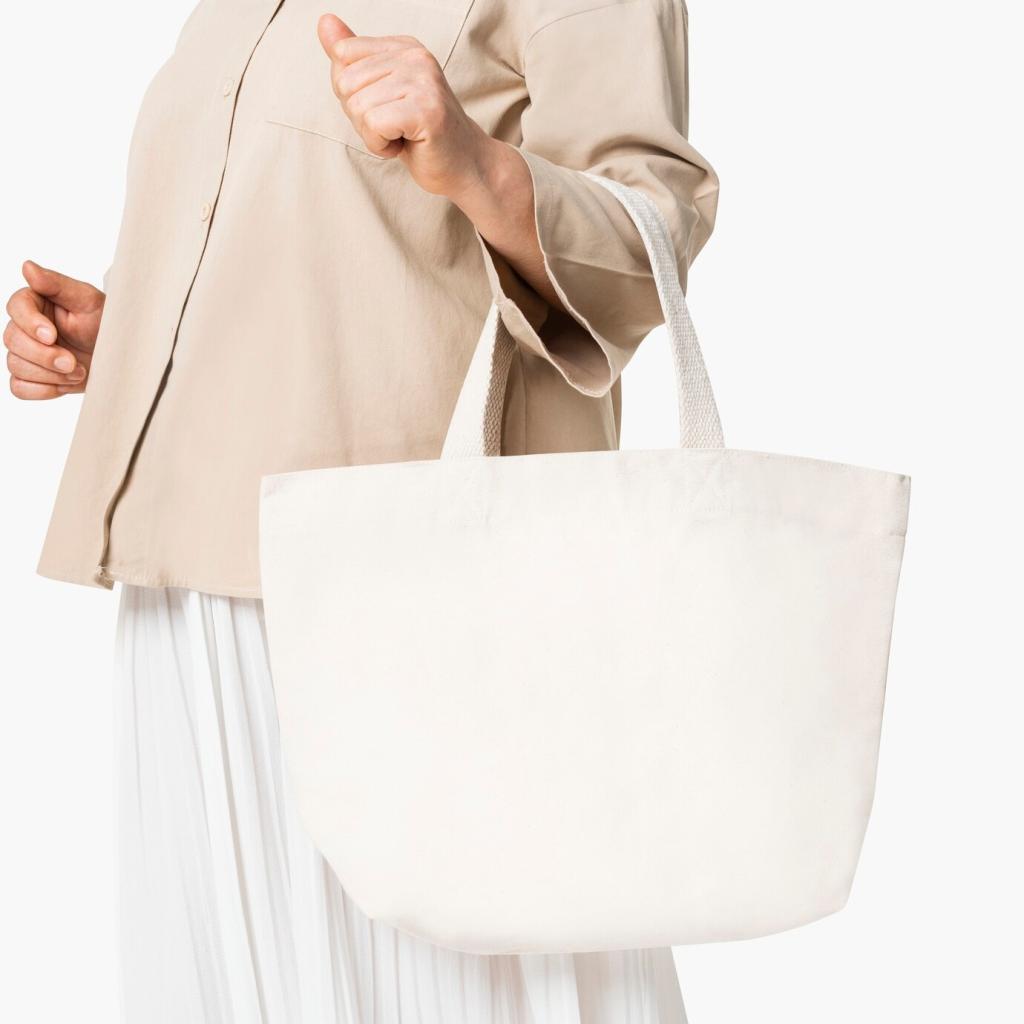
Why Bamboo and Cork Are Truly Renewable
Fast Growth, Thoughtful Harvest
Bamboo can mature in three to five years and has recorded daily growth spurts approaching a meter under ideal conditions. Cork oak trees are never felled; their bark is gently stripped every nine to twelve years, allowing continuous regeneration. Responsible harvesting rhythms protect forests while ensuring a stable, high-quality material supply.
Ecosystem Services You Can Feel
Cork oak landscapes, known as montado, shelter birds, store groundwater, and resist wildfires through mosaic management. Bamboo stabilizes slopes, captures carbon quickly, and restores degraded soils with dense root mats. Designers who specify these materials help sustain living systems that, in turn, deliver cleaner air, quieter rooms, and calmer, biophilic interiors.
Anecdote: The Replanted Studio
In a cramped city studio, we replaced dull vinyl with strand‑woven bamboo over a cork underlayment. The space smelled faintly woody for days, footsteps softened, and neighbors stopped asking about late-night edits. That small, renewable swap changed how we worked. What room could you gently transform? Tell us below and subscribe.
Strength-to-Weight Advantage
Strand‑woven bamboo delivers remarkable hardness and tensile performance relative to its weight, enabling slim profiles for floors, casework, and frames. Cork compresses under load and rebounds without permanent dents, protecting objects and joints. Together they create durable surfaces that feel forgiving, sidestepping the brittle harshness associated with many mineral-based options.
Thermal and Acoustic Comfort
Cork’s honeycomb cells trap air, reducing heat loss and dampening sound across conversational frequencies. Underfoot, it stays pleasantly warm and noticeably quiet, especially in multi-story homes. Bamboo layers pair well with radiant systems, distributing warmth evenly while limiting expansion noise. Designers use this duo to dial rooms toward gentle, livable calm.
Tactility and Emotion
Texture shapes emotion. Bamboo’s fine grain reads as ordered and optimistic; cork feels soft, grounded, and friendly to bare feet. These cues encourage slower movement and deeper focus, aiding well-being at home and work. If that resonates with your project goals, follow our journal and share a space you’d recalibrate.
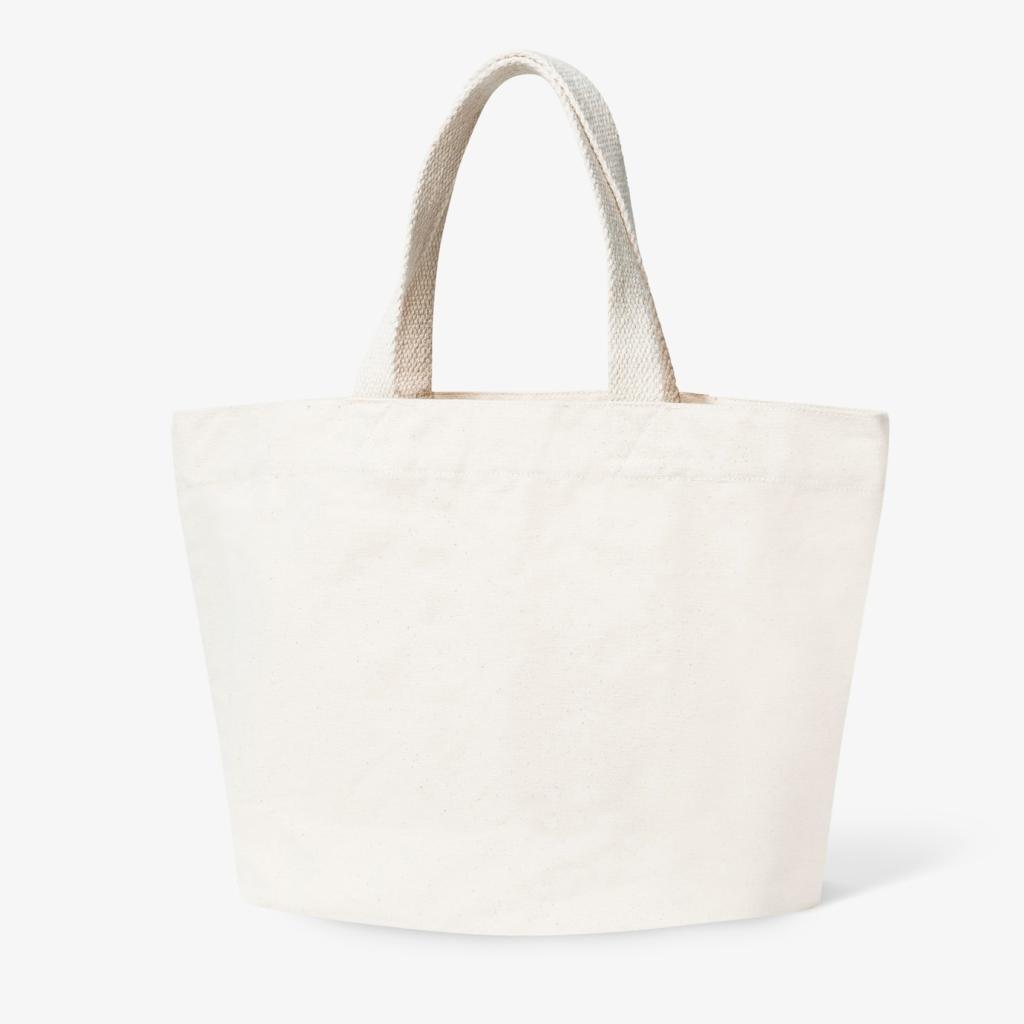
Sourcing Responsibly and Certifying Trust
Look for FSC or PEFC forest certifications and verified chain‑of‑custody numbers. Environmental Product Declarations help compare impacts across categories, while ISO 14001 signals robust environmental management at manufacturing sites. When possible, request low‑emission resin disclosures and adhesives meeting E0, NAUF, or CARB Phase 2 standards to minimize indoor air pollutants.

Applications: Interiors That Breathe
Floors and Walls
Strand‑woven bamboo floors bring strength and continuity; cork tiles and panels add softness, acoustic control, and subtle patterning. Choose waterborne, low‑VOC finishes and solvent‑free adhesives to protect indoor air. Floating assemblies with cork underlayment simplify retrofits and reduce demolition waste, making upgrades feasible in rentals or historic buildings.
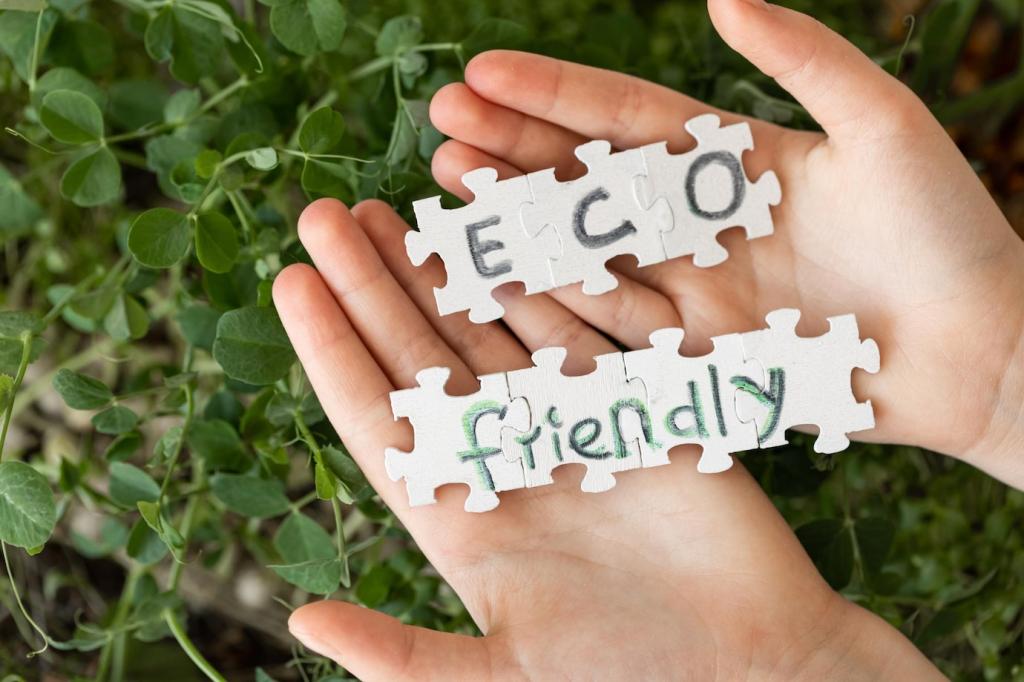
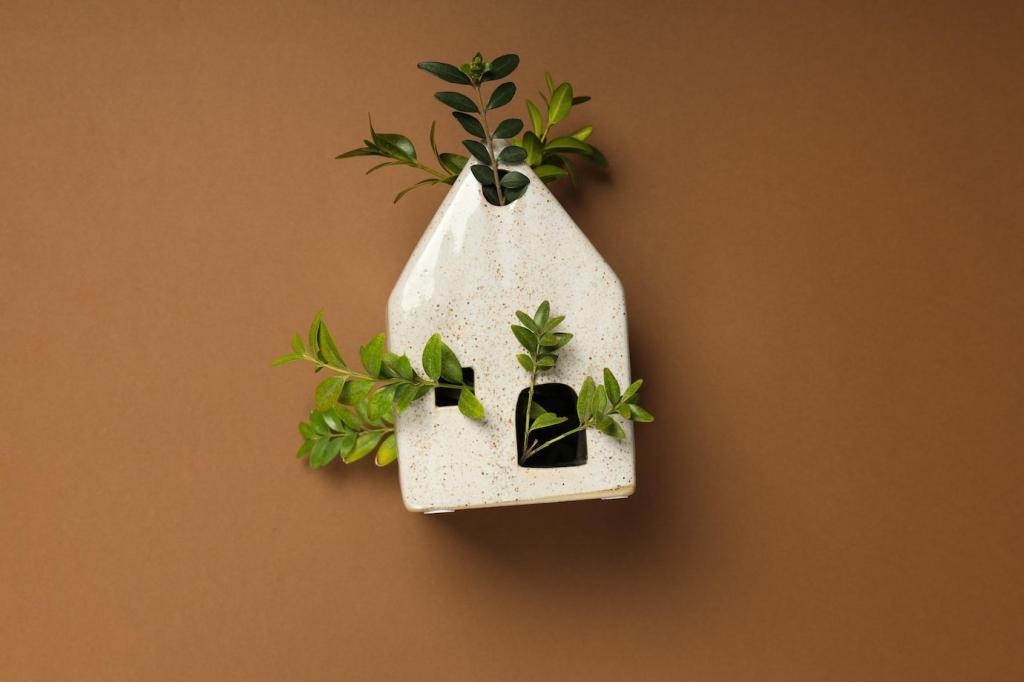
Furniture and Lighting
Laminated bamboo ribs form light, stiff frames for chairs and shelving, while turned cork yields lamp shades that glow warmly and tame glare. A recent cafe project paired cork pendants over bamboo tables, inviting guests to linger. Have you tried similar combinations? Share photos or lessons learned to inspire our community.
Making the Material: From Culm and Bark to Panel
After harvesting, culms are split, planed, and optionally carbonized for tone. Fibers are then aligned and pressed with resins to form classic or strand‑woven boards. Ask about bio‑based binders, E0 emissions, and NAUF claims, and specify click‑lock edges or mechanical fasteners to avoid wet adhesives during installation whenever possible.
Making the Material: From Culm and Bark to Panel
Cork bark is steamed, flattened, and graded into planks for natural cork products. Offcuts are granulated and agglomerated with binders to create sheets, blocks, and underlay. Many mills run near zero waste by cycling trimmings back into production and using biomass from cork dust to power dryers and presses efficiently.
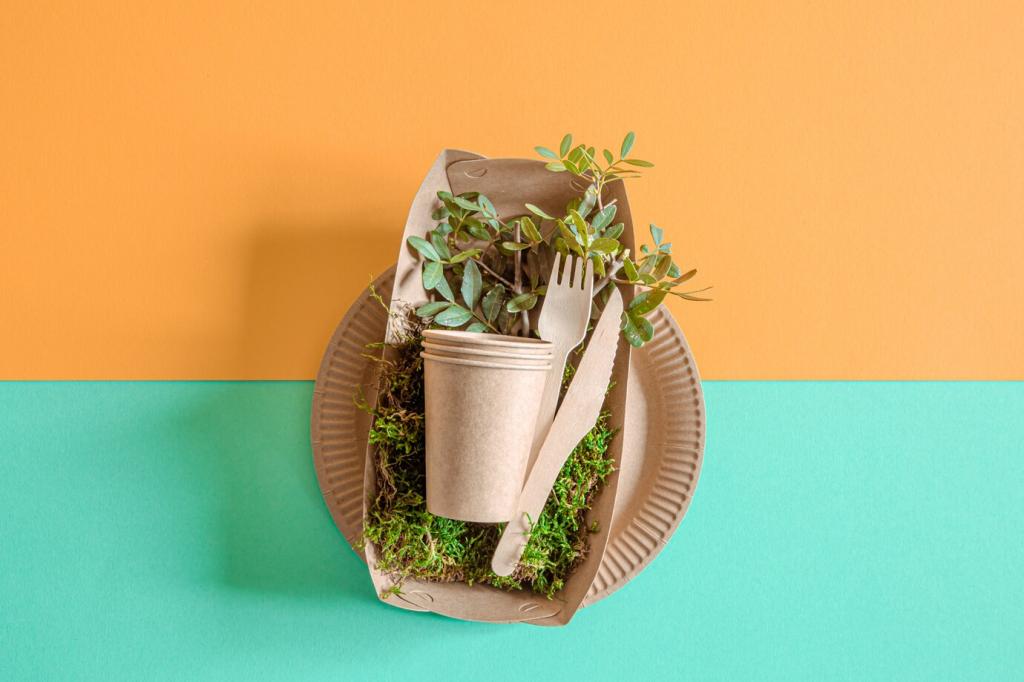

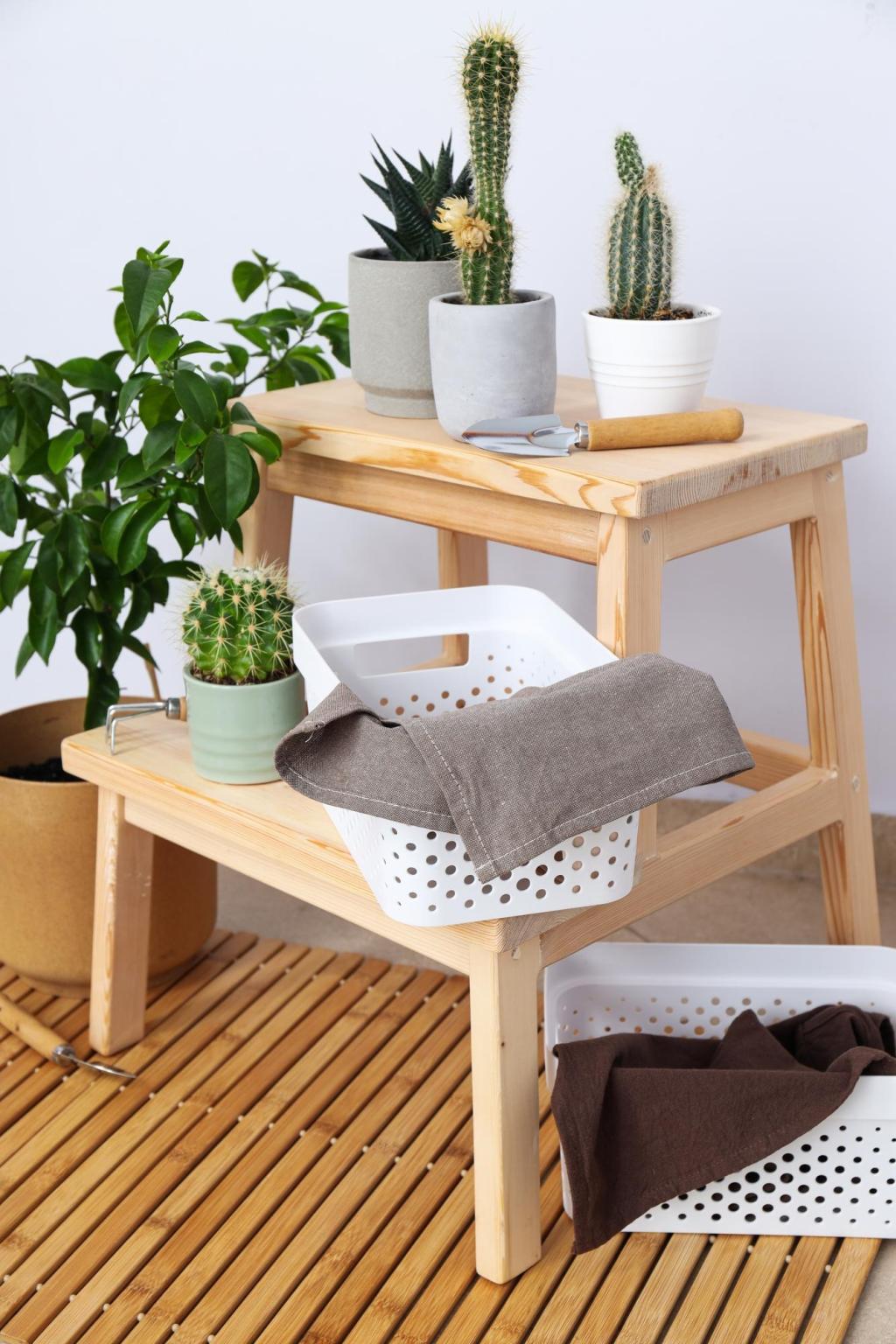
Sequestered Carbon, Accounted Honestly
Bamboo and cork store atmospheric carbon while they grow; much of that remains locked in products for years. Avoid double counting by separating biogenic storage from process emissions. Favor sea freight where possible and compare impacts with EPDs; you’ll often see meaningful savings versus ceramic tile or rigid plastics.
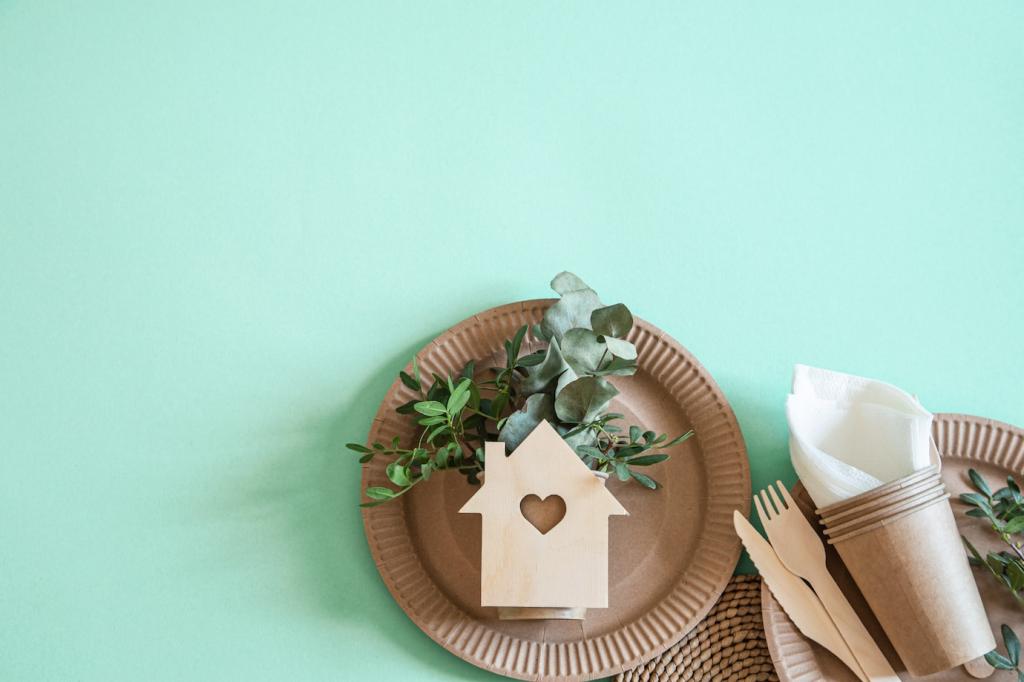
Durability and Repairability
Plan for repair. Bamboo floors can be refinished; cork tiles accept seamless patches and spot sealing. Keep a labeled box of offcuts for future fixes. Extending service life by even five years can outpace many manufacturing optimizations in climate benefit, reducing replacement cycles and the waste streams they generate.

Return, Reuse, Compost?
Seek reuse programs first, then material recycling. Post‑consumer cork can be collected through initiatives like ReCORK and reborn as underlay or footwear components. Untreated bamboo and natural cork may biodegrade, but verify local facilities and coatings. Share regional end‑of‑life resources in the comments to build a collective directory.
Getting Started: Care, Finishes, and Sourcing
Waterborne polyurethanes offer tough protection with low odor; hardwax oils accentuate grain and enable easy spot repairs. Demand clear VOC data and certifications like GREENGUARD Gold. Test sheen levels under your lighting, and remember that matte hides scuffs gracefully while satin balances cleanability with a soft, natural appearance.
Getting Started: Care, Finishes, and Sourcing
Use felt pads under legs, maintain indoor humidity near forty to sixty percent, and capture grit with entry mats. Wipe spills quickly, avoid steam mops, and clean with pH‑neutral products. Schedule light re‑oiling or topcoat refreshes as needed. Small habits compound, keeping renewable surfaces beautiful for many busy years.

